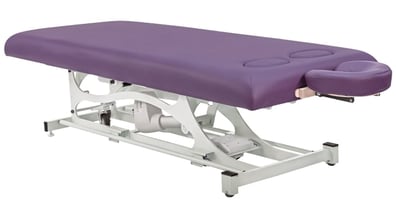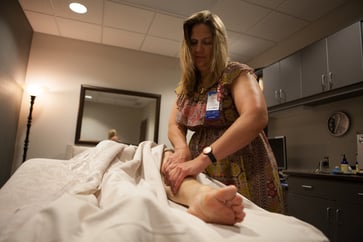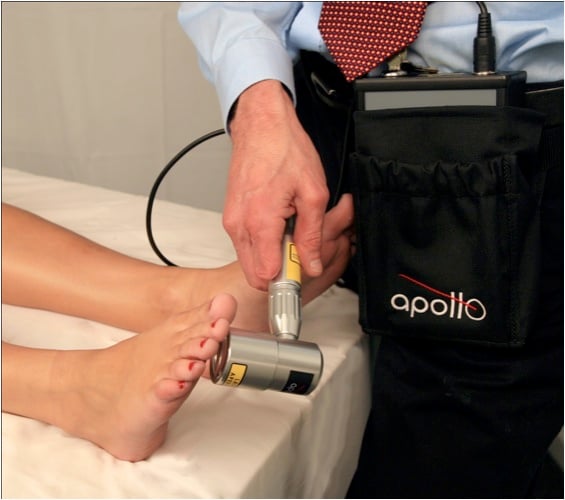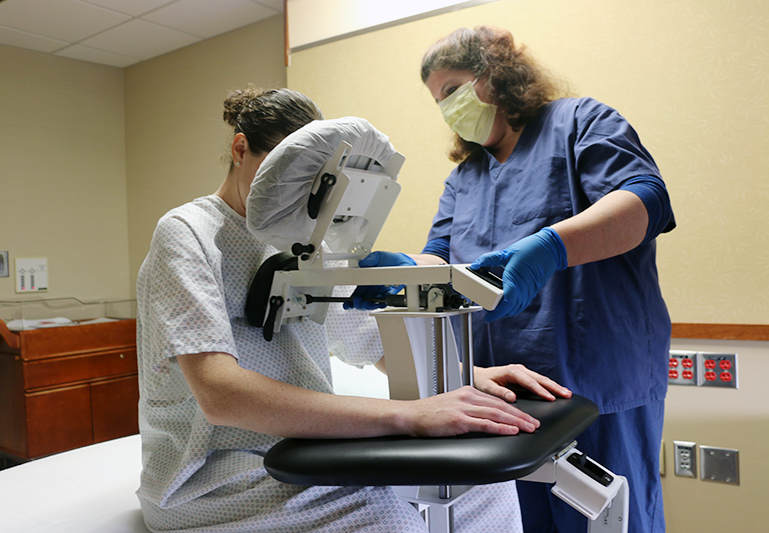Progress has been in the areas of cancer and massage therapy research. Although there is enough research evidence now that points to massage as a significant benefit for people living with cancer, there are still myths, questions, and mysteries surrounding massage treatments for individuals affected by cancer.
 via shutterstock.com via shutterstock.com |
Before we get to the most common questions about oncology massage, let’s hear real quotes from people affected by cancer praising the benefits of massage:
“It’s like a vacation from cancer.”
“It’s my place to be in control and do something for myself.”
“I’m overcome by the most amazing feelings of acceptance and peace.”
1. What is “oncology massage”?
As with any good massage session, an oncology massage session looks different for each person. Oncology massage is a client-specific, customized massage session designed to meet the unique and changing needs of someone in treatment for cancer or with a history of cancer treatment. A safe massage plan generally revolves around the side effects (both short- and long-term) of chemotherapy, radiation and surgery.
Oncology massage can only be provided by a massage therapist who has received training in the specifics of cancer and cancer treatment. This training is more about cancer and less about massage. When you are receiving an oncology massage, you are receiving traditional, established massage therapy techniques that have been adapted to account for your unique health situation.
2. Does massage spread cancer?
The simple answer is NO. For years the fear that massage could spread cancer prevented therapists from working with clients with cancer and cancer histories.
“Massage of a solid tumor site should be avoided, but there is more to a person than a tumor site,” according to oncology massage specialist Tracy Walton on her website.
This is one of a few old massage myths and it goes like this:
It’s been said that if one was to massage over a tumor, cells could break off and be spread to other areas throughout the body via the bloodstream. Nope. Doesn’t happen that way.
First, a properly skilled therapist won’t be massaging directly over a tumor site. Further, the type of pressure used in massage is akin to that of water pressure in a shower, and isn’t likely to be causing the dispersal of cells.

Secondly, it was also thought that by raising general circulation massage promote metastasis since tumor cells travel through blood and lymph channels. We understand now that regular exercise and normal daily movement raise circulation much more than an hour massage. Since physical activity is usually encouraged in people with cancer there is no reason to discourage massage or some form of skilled touch. Medical research backs this up with evidence, with researchers and patients reporting multiple benefits of oncology massage treatment.
3. Is massage safe for people living with cancer?
Yes! The Society for Oncology Massage and the American Cancer Society state this in very clear terms. A properly trained oncology massage therapist can provide safe and effective massage for any person at any stage of their cancer journey: during and after treatment, in remission, cure or at the end of life. Oncology massage is a complementary therapy (not meant to replace conventional medical care, but to work along side it) and has many benefits.
What are the benefits? Here are just a few mentioned by American Cancer Society:
- Reduce stress and anxiety
- Relax muscles and improve a senseof well-being and relaxation
- Relieve stiffness, reduce pain of headaches and backaches
- Increase mobility
- Rehabilitate injured muscles
- Raise the body’s production of endorphins to improve mood
4. Do I need a doctor’s permission to proceed with massage?
A patient living with cancer should always consult his or her physician when considering oncology massage, but there is a second step of finding the right massage therapist. Just because a doctor has given permission does not mean that a general massage practitioner is right for the job. Massage therapy is practiced in many different ways by therapists with many different levels of training.
Lauren Cates puts it this way on an article titled Doctor’s Orders: Getting Permission for Massage Therapy: “When a doctor provides a patient with written ‘permission’ to receive massage, it is just that; permission to receive massage. Any massage. In most cases, it is not a bulleted list of the myriad concerns that our training and experience as massage therapists tell us we need to take into consideration.”
A growing number of physicians welcome massage therapy for their patients, which is a good thing, but it is not realistic to expect them to be aware of all the variations. The responsibility lies with the therapist to practice ethically and within his/her training and experience. Which leads us to the last question.
 5. Is it important for my massage therapist to have special oncology massage training?
5. Is it important for my massage therapist to have special oncology massage training?
Even with a doctor’s order it is best for the client to see a trained oncology massage therapist who will know the appropriate questions to ask to make safe adjustments to the massage and who will often include the physician in the massage care plan conversation if needed.
Increasingly, facilities that offer oncology massage are requiring therapists to have advanced instruction in this area. They may require a particular training, or a certain number of hours or clinical experience.
An advantage of oncology massage training is the chance to spend time and network with other like-minded professionals. Tracy Walton & Associates offers training for this specialization and notes on their website: “Therapists who choose oncology massage make up a particularly committed, passionate and thoughtful group of practitioners, and it’s a rare chance to spend training days in such company. You might find that others in the training have started programs, worked in specialized settings, found interesting work opportunities, or have useful contacts for furthering your own work.”
If you are a massage therapist interested in pursuing this certification and specialty, or if you are a client looking for more information on how to choose the right oncology massage therapist for your needs, check out the sources below for more information.
Tracy Walton & Associates: http://www.tracywalton.com
Society for Oncology Massage: http://s4om.org
American Cancer Society: http://www.cancer.org
Lighthold Massage Therapy: http://www.lighthold.org/





